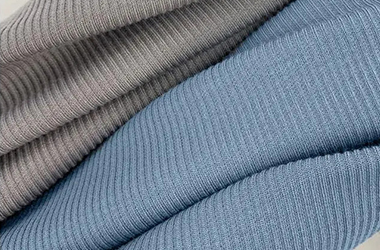We make extensive use of knitted materials in our day-to-day activities.
The most common items are knitted jersey, cotton wool, ribbed fabric, mesh fabric, polar fleece, air layer, polyester cover, terry cloth, brushed cloth, cut flannel, fake fur, and other similar items. There is a wide variety of woven textiles with diverse variations. Techniques such as plated yarn organization, pad organization, terry change organization, and plain rib change organization, amongst others. The same product will have numerous variations as a result of the various needle arrangement rules of the weaving process. For example, mesh fabric might have tiny mesh, pearl mesh, pineapple grid, waffle, and so on.
The following is the particular manufacturing procedure that takes place:
Spinning, weaving, dying, and finishing are the four primary processes that take place during the manufacturing of knitted materials.
1. The process of transforming various types of woven fibers into yarns is referred to as spinning.
2. Weaving refers to the process of creating a fabric using knitting needles or other looping equipment to create loops out of yarns, and then stringing those loops together all at once.
3. The process of painting the fiber material using dyes or pigments and producing it with a specified level of fastness is referred to as dyeing.
4. Reconstruction: Make is a term that refers to the physical and chemical processing that is done to a fabric in order to enhance the look and internal quality of the fabric, increase the wearing performance of the fabric, or give it particular functions.

Knitted textiles are often created using a machine called a circular knitting machine. Since the knitted fabrics produced by a circular knitting machine are in the form of tubular fabric, a second equipment known as a tubular fabric slitting machine is used during this process. The tubular fabric will be transformed into open width fabric by the slitting machine for tubular fabric, and these finished pieces of open width fabric will then be sent to the subsequent step in the process.
The following are some advantages of knitted fabrics:
Because of the weaving characteristics of knitted fabrics, the coils of the fabrics have a lot of space for expansion and contraction. As a result, the stretchability and elasticity of the fabrics are very good, and the fabrics can be worn without restricting human activities (such as jumping and bending, etc.), which is an example of a production movement. The material that is most often used for garments.
Weaving may be done using either natural fibers or certain synthetic fibers that have a frothy consistency. Their yarn has a low twist, and the resulting fabric is loose and breathable. This characteristic significantly lessens the amount of friction that is caused by the clothing rubbing against the skin, and the fabric itself is very supple and pleasant. suitable for use as a raw material in the production of intimate apparel.
The knitted fabric has an air pocket structure within, and the natural fiber itself has a certain amount of moisture absorption and breathability, which results in the knitted fabric having a high degree of breathability and making it feel quite cool. Knitted textiles are used in the production of a significant portion of the summer clothing that is sold in stores today.
Knitted materials, as was previously noted, offer good stretchability, which means that the fabrics can immediately recover after being stretched by external forces and are less likely to easily create creases. After being washed, the knitted fabric may be quickly dried if it is made of chemical fibers.
Knitted textiles have the following disadvantages:
Knitted textiles have a structure that is rather loose, making them simple to wear and reducing the amount of time that garments may be worn before needing to be replaced. This makes knitted materials susceptible to fluffing or pilling after extended use or washing. The size of the cloth does not remain steady, and if it is a knitted fabric made from natural fibers, there is a good chance that it will shrink. Also, there is weaving machine at SUNTECH.
Since SUNTECH has more than 45 years of expertise in the area of textile machine production, we encourage fabric manufacturers to come to us with any queries they may have, and we will be happy to give the most professional and appropriate answer for their needs.
Please feel free to contact us via sales@suntech-machinery.com if you have any questions or concerns regarding the pricing of the fabric slitting machine that we are offering for sale. Or you may visit our website: https://www.suntech-machine.com/




